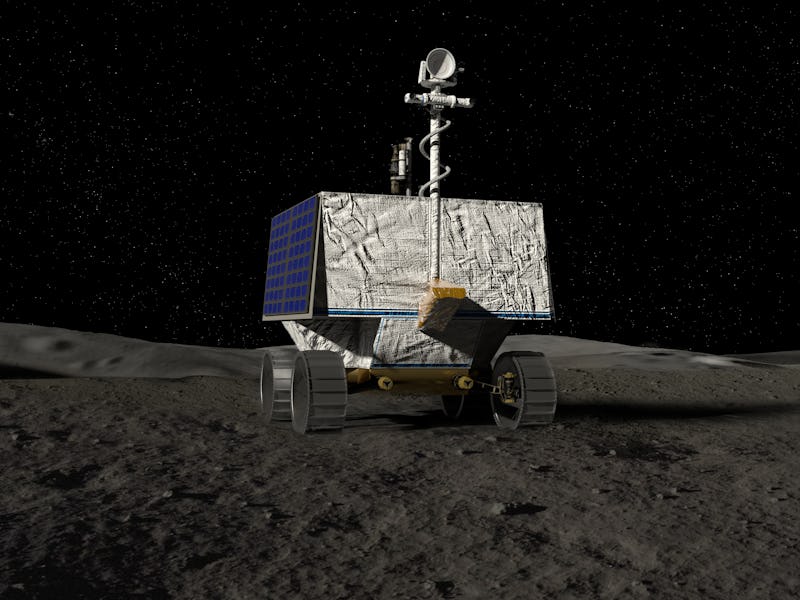VIPER: Everything you need to know about NASA’s latest lunar rover
Meet the robot that will set the stage for a human return to the Moon.

NASA is getting ready to return humans to the Moon as part of the Artemis missions. But before it does, a golf-cart sized robot will help set the stage for our grand arrival.
Meet VIPER.
The Volatiles Investigating Polar Exploration Rover, or VIPER for short, has a critical job to do. It is charged with searching for water in the Moon’s polar region.
Water on the Moon would be a lifeblood for future lunar explorers, and could allow astronauts to spend longer times exploring the lunar surface than we have ever managed before.
Got water? An artist's rendering of VIPER in action.
This little guy is up for the task.
Here is what makes VIPER the perfect robot for this mission, what it is designed to do, and when it will launch.
The VIPER mission, explained
VIPER is bound for the Moon’s South Pole, where it will search for water ice.
Previous NASA missions have confirmed the existence of water ice at the Moon's polar regions, concentrated in dark craters where temperatures never go above -250 degrees Fahrenheit. VIPER will provide surface-level detail of where the water is located, and how much of it is available for future astronauts to use.
Water on the Moon would open up a new era of space exploration. It is a crucial resource for long-term human missions on the Moon, and could enable the Moon to become a launchpad for a human mission to Mars.
Aside from supporting daily life on the Moon, water can also be used to make rocket propellant, enabling space exploration missions to use our closest neighbor like a cosmic gas station.
Engineers are getting the rover set up for its daring mission.
With the help of the rover, NASA is hoping to create a map of the water resources on the Moon, which would make VIPER the first mapping mission on a celestial body other than Earth.
VIPER lunar rover, vital statistics
VIPER is about the size of a golf cart, but don't be deceived by the comparison.
Unlike any mere golf cart, the lunar rover carries a drill and three science instruments aboard its shining gold body.
VIPER will roam the lunar surface, looking for signs of water.
Once on the Moon, the rover will roam the South Pole, using its Neutron Spectrometer System to detect water below the lunar surface.
It will also use its Regolith and Ice Drill for Exploring New Terrain, or TRIDENT, to dig up soil cuttings from up to three feet beneath the surface.
VIPER will then analyze the samples using two further instruments, the Mass Spectrometer Observing Lunar Operations, or MSolo, and the Near InfraRed Volatiles Spectrometer System, to determine whether or not they contain that most vital resource, water.
It will collect these data for up to 100 days. This information will then be used to map the Moon's water resources in detail for the first time.
When will VIPER launch?
VIPER is scheduled to land on the rocky lunar surface by the year 2023. It will launch as part of NASA’s Commercial Lunar Payload Services program.
The program contracts commercial space agencies to send small robotic landers and rovers to the Moon to look for lunar resources.
NASA has invited 14 companies to bid on flying VIPER to the Moon.
VIPER is an opening act to a headliner unlike any other. The space agency is aiming to launch humans to the Moon by the year 2024, landing them on the Moon's South Pole, too.
Ultimately, NASA's Artemis program wants to set up a sustainable presence of astronauts on the Moon, sending a crew up to the lunar surface every year.